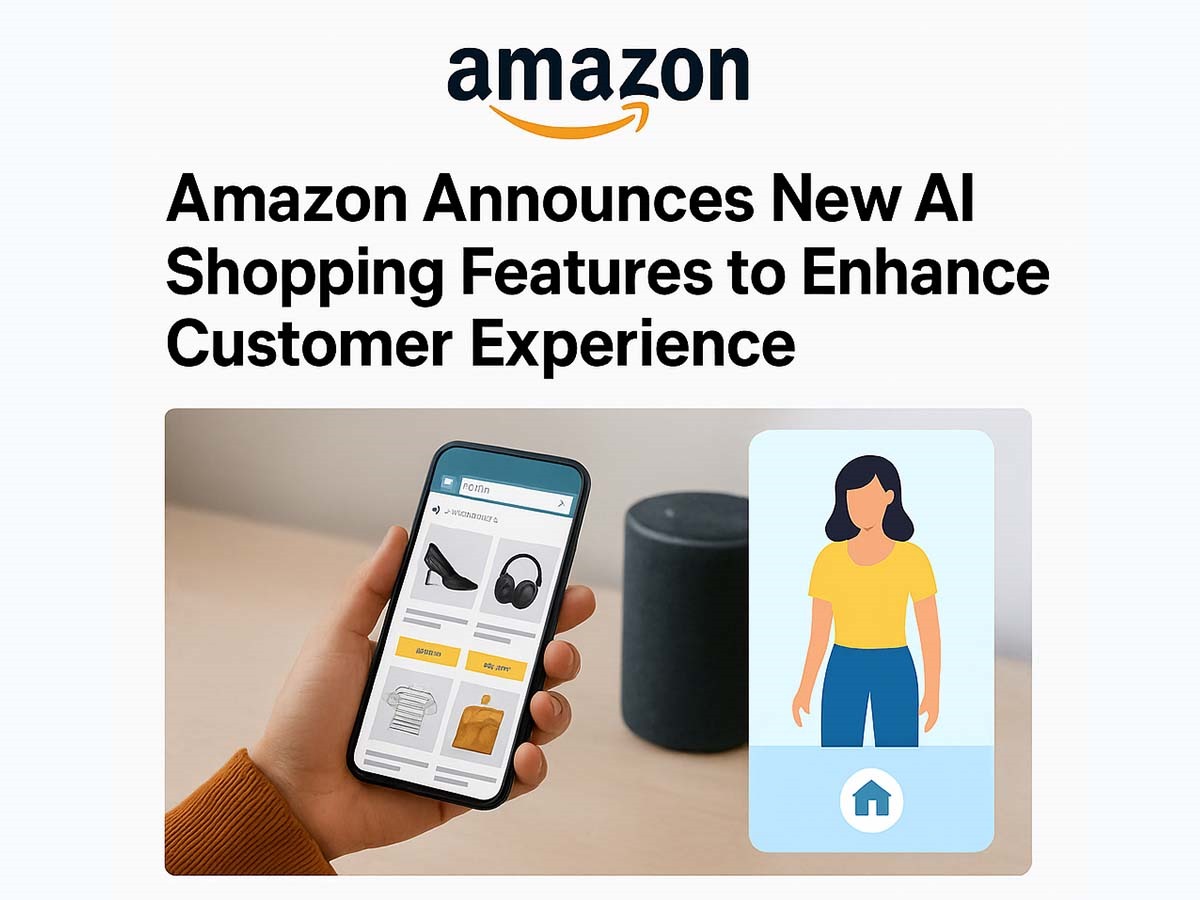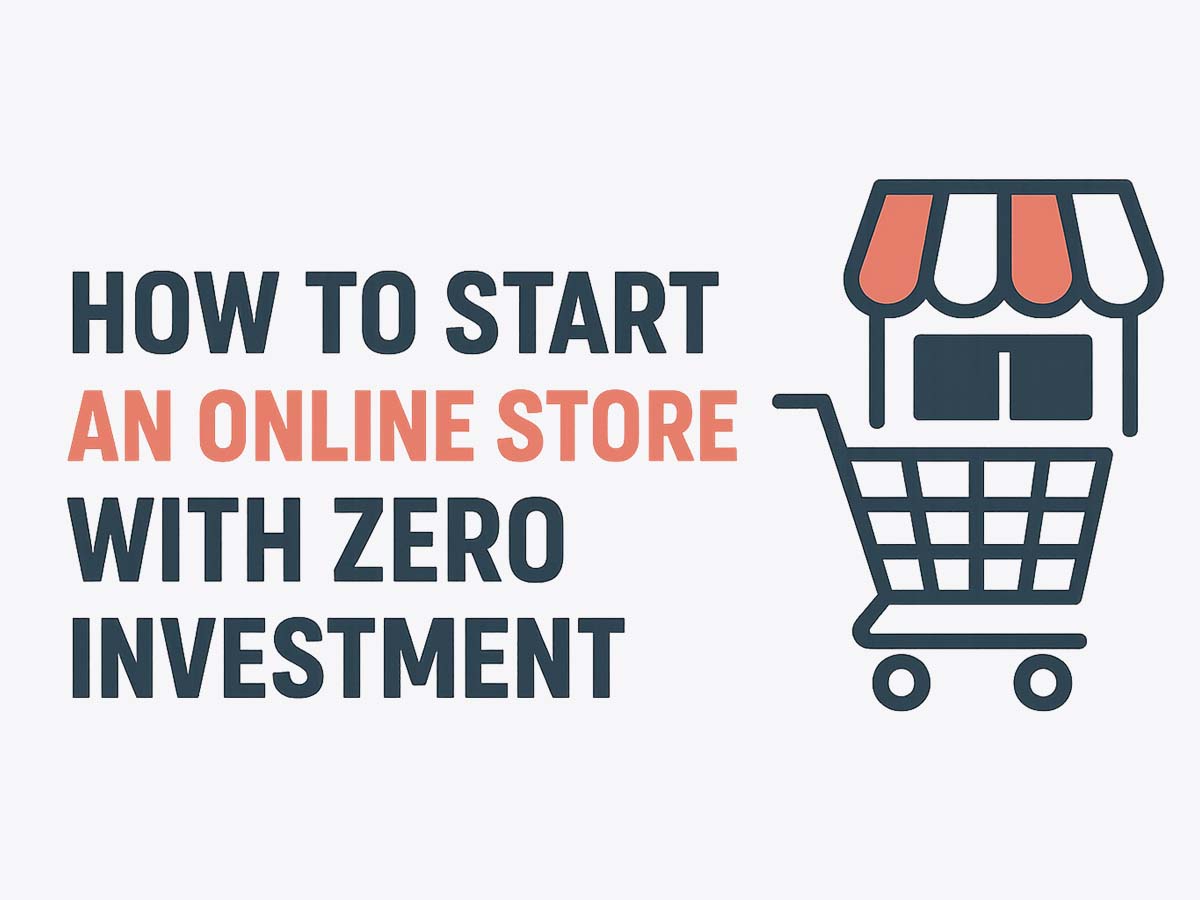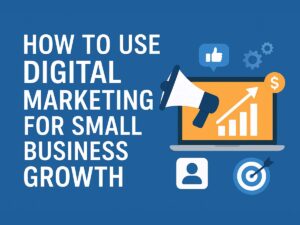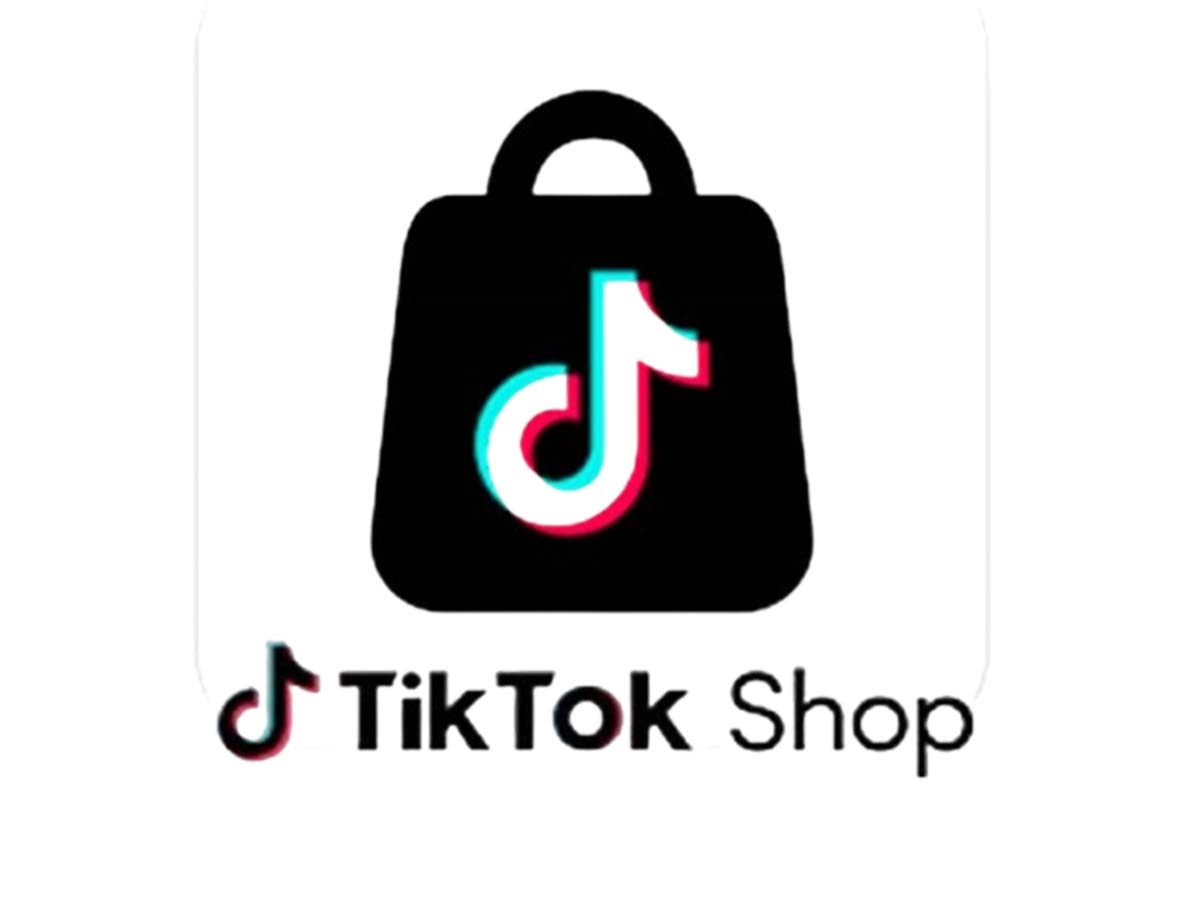Amazon Announces New AI Shopping Features
What You Need to Know
Table of Contents
- Introduction
- Overview of Amazon’s AI Strategy
- Key New AI Shopping Features
- Lens Live (Real-Time Visual Search)
- “Hear the Highlights” Audio Product Summaries
- Rufus (AI Shopping Assistant) Integration
- AI Tools for Sellers & Advertisers
- Other AI Experiments (Interests, Health Chatbot etc.)
- Feature Comparison Table
- How These Features Impact Shoppers
- How Sellers, Brands & Advertisers Should Adapt
- Challenges, Risks & Ethical Considerations
- SEO and Content Strategy Implications
- Predictions: What’s Next for Amazon’s AI Shopping
- YouTube Video Links & Resources
- Conclusion
1. Introduction
Amazon has long been at the forefront of e-commerce innovation. In 2025, the company is doubling down on integrating artificial intelligence (AI) into its shopping experience. The goal is twofold: make shopping more intuitive, faster, and more engaging for customers; and enable sellers, brands, and advertisers to reach customers more effectively, with better tools and insights.
As retail becomes increasingly competitive, features such as visual search, AI-powered summaries, conversational agents, and generative tools are no longer “nice to have” — they are quickly becoming expectations. This blog explores Amazon’s new AI shopping features released or tested in 2025, what they do, how they differ, what their implications are for all stakeholders, and how to make the most of them.
2. Overview of Amazon’s AI Strategy
To understand the new features, it helps to see them in Amazon’s broader strategy:
- Amazon is using generative AI, machine learning, computer vision, speech technologies and large-language models to improve product discovery, personalization, and seller/advertiser support.
- The company is leveraging its vast data troves: customer searches, clicks, purchase behavior, product reviews, product listings, external sources etc.
- Amazon is aiming to reduce friction in the shopping process: discovery → decision → purchase. Features that shorten that path tend to be prioritized.
- Another aim is to help smaller sellers and advertisers compete by providing AI tools that reduce the cost/time needed to create content, listings, and optimize performance.
- There is also a continued push for more natural user interfaces — voice, live visuals, camera-based interactions — so that Amazon’s app / shopping system feels more intuitive and less “typing and scrolling.”
3. Key New AI Shopping Features (2025)
Here are the major AI shopping features Amazon has released, announced, or started testing lately. For each, we explain what it is, why it matters, how it works, and where/when it is available (or being rolled out).
| Feature | What it is | Why it matters | How it works / Key Capabilities | Availability / Status |
|---|---|---|---|---|
| Lens Live (Real-Time Visual Search) | An upgrade to Amazon Lens: using real-world camera view (live from phone) to detect objects and surface matching product listings in real-time. Swipable product carousel in camera view; you can add items to cart or wishlist without leaving camera. Integrates with Rufus (Amazon’s AI assistant) for summaries & suggested questions. The Times of India+3TechCrunch+3CX Dive+3 | Greatly improves discovery; reduces effort to find product seen in real life; bridges gap between browsing in physical world and Amazon’s product catalog. Helps impulse purchases; reduces friction in search. | Runs on AWS SageMaker, Amazon OpenSearch, computer vision. The tool can detect primary object automatically; users can tap to focus; shows summaries, suggestions via Rufus; allows add to cart / wishlist directly from camera view. TechCrunch+2CX Dive+2 | Initially available to tens of millions of U.S. iOS app users; will be expanded in U.S. soon; not yet global in many reports. TechCrunch+2PYMNTS.com+2 |
| “Hear the Highlights” Audio Product Summaries | A generative AI feature that provides short-form audio summaries of product detail pages — highlights of key features, reviews, etc. Think of it like a mini product-podcast. About Amazon+1 | Helps customers who are multitasking or prefer listening over reading; speeds up decision making; improves accessibility; enhances user engagement. Also may help products with good reviews get more attention. | The audio is generated by AI which compiles info from the product’s title, description, bullet points, customer reviews, external data. A “Hear the Highlights” button appears on product detail pages in Amazon’s Shopping app. Users tap to listen. About Amazon+1 | Testing on selected products and subsets of U.S. customers; planned to roll out more broadly over time. About Amazon+1 |
| Rufus (AI Shopping Assistant) Integration | Amazon’s AI assistant for shopping: natural-language prompts, helping with search/exploration, summaries, guiding buying decisions. Used in features like Lens Live. TechCrunch+1 | Personalization and conversational interaction improve user satisfaction; allows buyer to compare, ask follow-up questions; reduces friction. | Integrated into Lens Live; provides summaries, suggested questions (e.g. “What material is this? Will this size fit?” etc.), helps in research. It works along with visual search, so when a visual match is shown, Rufus can generate insight. TechCrunch+1 | Already rolling out with certain features; U.S. markets primarily; expansion expected. PYMNTS.com+1 |
| AI-Powered Tools for Sellers & Advertisers | Several tools: “Opportunity Explorer” upgraded with AI; Enhance My Listing; enhancements to Vine review program; agentic AI creative tools for ad generation; enhanced Video Generator etc. Retail Dive+3About Amazon+3About Amazon+3 | Helps sellers launch products with less guesswork; reduces upfront inventory risk; lets advertisers produce creative content more efficiently; levels playing field for smaller brands. | Opportunity Explorer gives insights into unmet demand, pricing benchmarks, buyer expectations; Enhance My Listing helps auto-optimize listing content; AI creative partner in Creative Studio helps with ad ideation, storyboarding, script / display & video production, etc. Ad video generator helps advertisers produce multiple video options with realistic motion and scenes. About Amazon+2About Amazon+2 | Many of these tools are live or in beta; available to U.S. sellers/advertisers; rolling out gradually. Regions may lag. About Amazon+1 |
| Other Experiments / Features (Personalized Interests, Health Chatbot, etc.) | Features under test: “Interests” which lets customers define their own shopping prompts in simple language; Health-focused AI chatbot; etc. Investopedia | These features represent new modes of discovery and customer support; may help Amazon personalize more, broaden customer stickiness, improve services in sensitive categories like health. | “Interests” uses large-language models to convert everyday language prompts (e.g. “coffee gadgets for brewing lovers”) into product search / alerts. Health Chatbot helps users find health-related products, navigate care solutions. Investopedia | Testing in U.S.; limited rollout. Not yet universally available. Investopedia |
4. Feature Comparison Table
To give a clearer view, here’s a side-by-side comparison of key AI features:
| Feature | Mode of Interaction | Main Input Type | Benefits to Shoppers | Benefits to Sellers / Advertisers | Limitations / Constraints |
|---|---|---|---|---|---|
| Lens Live | Visual / Camera + touch | Real-world images (camera), barcode / object detection | Instant discovery of items seen in the real world; less searching; more convenience | New potential routes for customers; better conversion; can tie visual trends to inventory decisions | Only iOS at first; accuracy depends on camera/lighting; matching catalog coverage; availability limited geographically |
| Hear the Highlights | Audio / Voice | Product pages, customer reviews, listing contents | Hands-free consumption; faster evaluation; aids accessibility | Listings with richer info / good reviews might get more attention; brands may encourage better listing content | Available only for selected products; summary quality depends on input quality; may omit details shoppers want |
| Rufus (Assistant) | Conversational / text / mixed modalities | Shopper queries + product + review data + product specifications | Can clarify doubts, compare items; reduces confusion; better purchasing decisions | Sellers may need to ensure listings have accurate, comprehensive data; may get more buyer questions; potential for better matching product to needs | Needs natural language capability; occasional misinterpretation risk; customers may expect too much; privacy & data concerns |
| Enhance My Listing / Opportunity Explorer | Dashboard tools / backend | Search data, click/purchase behavior, competitor / market data | Less directly visible to shopper; may result in better listings (titles, features) and thus indirectly better shopping experience | Helps in launching products, improving discoverability/conversion, reducing cost/time; smarter inventory & launch decisions | Only as good as data; may not always reflect niche local preferences; adoption lag; competitor behavior can change quickly |
| AI Creative Partner / Video Generator for Ads | For advertisers / sellers | Product images, brand assets, shopper signals, etc. | Better ad visuals; potential for customers to see products used/in-action; more engaging content leads to better decision making | Lower barrier to creating quality ad creatives; ability to scale creative production; A/B testing possibilities; faster time to market | Might be generic; creative fatigue; need to maintain brand voice; tools may have cost/learning curves; availability in certain markets only |
| Interests / Health Chatbot | Prompt based / conversational / alerts | Shopper’s natural language input + product catalog + health / care info | More personalized shopping suggestions; easier discovery; improved assistance in specific categories like health | New ways to reach customers; increased engagement; niche targeting; potential for subscription / premium services | Sensitive content risk in health category; regulatory issues; responses must be accurate; limited rollout; prompt interpretation may sometimes be off |
5. How These Features Impact Shoppers
From the customer / consumer perspective, these AI tools bring several changes and opportunities.
Faster Discovery & Decision Making
- Visual tools like Lens Live reduce the friction of finding a product seen in real life. No need to type descriptions or search by guess.
- Audio summaries (“Hear the Highlights”) help users absorb key product info quickly, which is helpful during commuting, multitasking, or for visually impaired users.
More Personalized & Conversational Experience
- Rufus and interest-based tools allow shoppers to ask questions, get suggestions, and interact more naturally rather than navigating menus.
- Personalized prompts or alerts via “Interests” let users see new products aligned with what they care about.
Enhanced Trust via Social Proof and Review Integration
- Summaries and assistants draw on customer reviews; tools like Vine (for sellers) and enriched review programs improve the quality of information shoppers see.
- Helps reduce risk of buying wrong items or being disappointed.
Multi-modal Shopping & Accessibility
- Use of voice/audio, camera, and conversational interfaces make shopping more accessible to people with different preferences or abilities.
- Makes mobile usage more intuitive, especially for users on the go.
Potential for Impulse / In-the-Moment Shopping
- Being able to point camera at something and see shopping matches may trigger more impulse buys.
- Also may reduce the time lag between seeing something you like and buying it.
6. How Sellers, Brands & Advertisers Should Adapt
If you’re selling on Amazon, advertising there, or building products to be listed, these changes mean you should adjust strategy. Here are actionable things to consider.
| Area | What Sellers / Brands Should Do |
|---|---|
| Listing Quality & Content | Ensure product titles, bullet points, descriptions are detailed, clear, well-structured because AI-summaries will pull from them. Use customer reviews to highlight strengths; ensure images are high quality; fill in A+ content if available. |
| Customer Reviews | Encourage honest reviews; resolve complaints; ensure products match descriptions. Because features like “Hear the Highlights” and review-based assistant prompts will emphasize review content, a history of negative feedback may hurt more. |
| Visual Presentation | Since Lens Live relies on matching what the camera sees, ensure products are visually appealing and that images illustrate what items look like well; consider design, packaging, color etc. |
| Advertising Strategy | Use AI creative tools to produce better video/display ads quickly; test multiple creatives; use Amazon’s Creative Studio / Video Generator etc. Keep brand voice even when using automated creative tools. |
| Inventory & Launch Planning | Use Opportunity Explorer and unmet demand insights to find niche opportunities; test new products with lower inventory risk; consider Vine enhancements to get early reviews. |
| Optimize for New Interfaces | Think about how your product will be “heard” (for audio summaries) and “seen” (for visual search). Use conversational tone where appropriate; ensure important features are highlighted early. |
| Localization | For non-US markets, expect similar features eventually; local preferences / lighting / cultural norms matter for visual search; review content in local languages; product sizing etc. |
| Monitoring & Feedback | Track usage of new features; collect customer feedback on summaries, visual matches; adjust listings accordingly; keep up-to-date with Amazon’s documentation for these tools. |
7. Challenges, Risks & Ethical Considerations
While these features bring many positives, there are also challenges and potential downsides to be aware of.
- Accuracy & Mis-Match Risk: Visual search might misidentify items or show irrelevant matches. Product summaries might misstate features or gloss over negatives.
- Bias or Omission in AI Summaries: AI tools may emphasize positive reviews more than negative ones or omit important details. Sellers with fewer reviews or less famous brands might be underrepresented.
- Over-Dependence & Loss of Human Touch: If shoppers and sellers rely too heavily on AI, there could be less nuanced judgment, less personal curation. Brand voice and authenticity might suffer.
- Privacy & Data Use Concerns: Visual recognition, voice, review data usage all raise privacy questions. Shoppers may be sensitive to how their data is used; regulation may require transparency.
- Regulatory & Legal Issues: Especially in health categories, with chatbots; in other categories, product labeling / claims could be more carefully regulated.
- Accessibility & Inclusion: Features like audio summaries help, but only if well implemented. Need to consider different languages, disabilities, and ensure that tools do not exclude or misrepresent.
- Feature Availability & Geographic Limitations: Many AI features are U.S.-centric initially; international sellers or shoppers may lag behind. That can create uneven experiences.
8. SEO and Content Strategy Implications
For content creators, brands, and Amazon listing optimizers, the AI shopping features produce some new SEO/content strategy dynamics.
- Optimize Listings for AI: Since AI tools extract information from your listing content (title, bullet points, descriptions, reviews), these need to be well-structured, clear, benefit-focused, human-friendly.
- Relevance & Richness: Include key features, use correct keywords, provide examples, include helpful reviews. Good content helps both standard search (typed search) and AI-assisted discovery.
- Multimedia & Visuals Matter More: High quality images; lifestyle shots; correct lighting; multi-angle views will help visual search features like Lens Live.
- Leverage Reviews Wisely: Solicit customer reviews; respond to negative feedback; ensure good product quality. Reviewing product QA is important since review content may appear in AI summaries.
- Voice & Audio Optimization: Consider how content sounds — avoid overly technical / unnatural phrasing; make sure key benefits are stated clearly early; write listings that sound good when spoken (for audio summaries).
- Prompt-Friendly Titles & Bullets: If shoppers use “interests” or natural-language prompts, ensure your listing vocabulary matches common language; not overly vague or too technical.
- Adopt Creative Testing: Use Amazon’s AI tools for ad generation; experiment with different creatives; measure what works; keep brand identity consistent even in automated tools.
9. Predictions: What’s Next for Amazon’s AI Shopping
Based on current trends, here are likely directions Amazon will move in in the near to medium term (1-2 years).
- Expansion of these features globally — more countries, platforms (Android, web) will get Lens Live, audio summaries, Rufus etc.
- More seamless integration between offline and online shopping: pointing camera in stores, AR/VR preview features, possibly store-based recognition and recommendations.
- Enhanced personalization: as Amazon collects more data, recommendations will be more tailored to individual preferences, browsing history, voice behavior etc.
- More conversational / agentic shopping agents: features that make purchases on behalf of users (“Buy for Me” or “Assistant does it for you”), possibly subscriptions or concierge-type services.
- Advanced visual commerce: letting shoppers virtually try items, see how furniture looks in their room, try clothing via AR, etc.
- Better tools for creators or influencers: content that works well with visual/AI search; perhaps more video/audio content tied to Amazon’s AI tools.
- More regulatory oversight: privacy, health claims, transparency in how AI is using review data, verifying sellers etc.
10. YouTube Video Links & Resources
Here are some YouTube videos that illustrate or explain these new Amazon AI shopping features. Embedding or referencing them in your content can help with reader engagement and SEO.
- Amazon’s New AI Feature is Actually Good for Consumers? — discusses the “Hear the Highlights” style audio summaries and whether they genuinely help shoppers. YouTube
- Inside Generative AI @ Amazon – AI Shopping Guides — an overview of how Amazon uses AI for shopping discovery and evaluation. YouTube
- Amazon’s New AI Agent Will Shop for You — an explanation of Amazon’s “Buy for Me” AI agent idea + implications. YouTube
(If you prefer, I can gather more videos specifically for each feature: Lens Live, Rufus, ad-creative tools etc.)
11. How Amazon’s Recent AI Features Fit Into the Broader Landscape
It helps to see Amazon’s new features in the context of what others are doing (competitors, e-commerce trends).
- Visual search is becoming standard: Google Lens, Pinterest Lens etc. Amazon’s Lens Live adds purchase immediacy (add to cart from camera) which is a differentiator. TechCrunch+2PYMNTS.com+2
- Audio / voice shopping: Amazon’s “Hear the Highlights” aligns with rising demand for voice interfaces (smart speakers, voice assistants).
- Assistance & conversational agents: Rufus and health/chatbot tools mirror trends toward more natural dialog in shopping.
- Generative AI for content/ad creation: Many platforms are offering tools to help advertisers produce creative content more efficiently (Meta, Google, TikTok). Amazon’s Creative Studio agentic tool is part of that wave. Amazon Ads+1
12. YouTube Videos & Additional Resources
Here are some more resources, links, and things you might embed or refer to.
- Video: Amazon’s New AI Feature is Actually Good for Consumers? YouTube
- Video: Inside Generative AI @ Amazon – AI Shopping Guides YouTube
- Video: Amazon’s New AI Agent Will Shop for You YouTube
Also check Amazon’s own blog posts, “AboutAmazon” site, product / seller updates sections, and Amazon Ads / Creative Studio documentation. These are useful to stay up to date.
13. Conclusion
Amazon’s new AI shopping features in 2025 mark a substantial shift in how discovery, decision making, and purchase happen. With Lens Live, audio summaries, conversational assistants like Rufus, enhanced tools for sellers and advertisers, and experiments in personalized prompts and chatbots, Amazon is pushing the boundaries of what shopping can feel like: more immediate, more intelligent, more visual, more voice-friendly, more adaptive.
For shoppers, these features mean less friction, more tools to evaluate products quickly, and more ways to interact with the platform beyond just typing and scrolling.
For sellers and advertisers, the landscape is changing — those who adapt their listings, content, visual assets, reviews, and creative strategies to align with these AI features are likely to gain advantages in visibility, conversion, and customer loyalty.
However, these changes also come with responsibility: accuracy, trust, transparency, privacy, and inclusivity will be more important than ever.











Post Comment